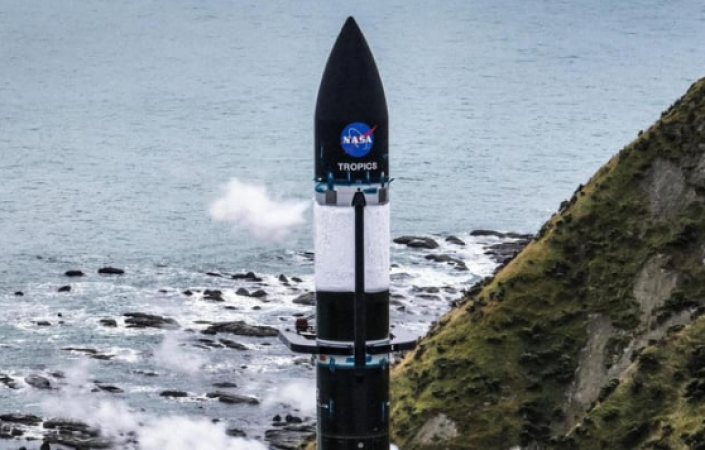
USA: The TROPICS mission, which stands for Time-Resolved Observations of Precipitation Structure and Storm Intensity with a Constellation of Smallsats, has successfully launched its second batch of satellites.
The CubeSats, or shoebox-sized satellites, were launched from Launch Complex-1 in Mahia, New Zealand, using a Rocket Lab Electron launch vehicle. Two additional TROPICS satellites that were launched earlier this month will join the newly launched CubeSats.
TROPICS is unique because its satellites are angled in their orbit so that they can pass over any storm about once every hour. In other words, better weather forecasting simply results from more frequent measurements.
Also Read: Japan and the UAE have signed a deal to transfer defence technology
By the start of the hurricane season in North America this year, scientists anticipate that the TROPICS satellites will be operational.
For the purpose of tracking tropical cyclones, the TROPICS mission will create a constellation of four identical CubeSats. One of the main benefits of the mission is that the satellite, which will be in low Earth orbit (LEO), will observe the weather more frequently than the current weather-tracking satellites. With almost hourly observations, TROPICS will analyse the precipitation, temperature, and humidity of strong tropical storms.
Also Read: Together Microsoft and NVIDIA will advance enterprise AI initiatives
Every six hours, today's weather-tracking satellites conduct investigations. TROPICS will assist researchers in enhancing tropical cyclone forecasts by collecting data more frequently. According to a blog post by NASA, each TROPICS CubeSat will be furnished with a microwave spectrometer that monitors over 12 spectral bands, including seven for temperature measurement, three for humidity, one for precipitation, and one for cloud ice.
At a distance of about 550 kilometres and an angle of about 30 degrees, the TROPICS satellites will orbit the planet. The area of the Earth where tropical cyclones develop will be covered by the satellites. The satellites' orbital position will allow them to cover the mid-Atlantic region of the US to the southern coast of Australia once every hour.
Also Read: A startup backed by OpenAI uses AI-powered robots in the real world
The ability to take frequent measurements, particularly from microwave instruments that see into the storms, has limited our ability to advance our understanding of tropical cyclones from space, according to Will McCarty, programme scientist for TROPICS mission.Historically, satellites have not been able to provide observations at a time-frequency that is consistent with the timescales at which tropical cyclones can form because they are too big and expensive.
McCarty added that smaller, less expensive satellites are now possible thanks to the CubeSat era. The construction of a constellation that "optimises the scientific utility of the mission" is made possible by the small-satellite design, which also makes cost-effective launches possible. By reducing the amount of time that a particular storm is revisited by the satellites, these factors allow TROPICS to offer a new understanding of tropical cyclones.